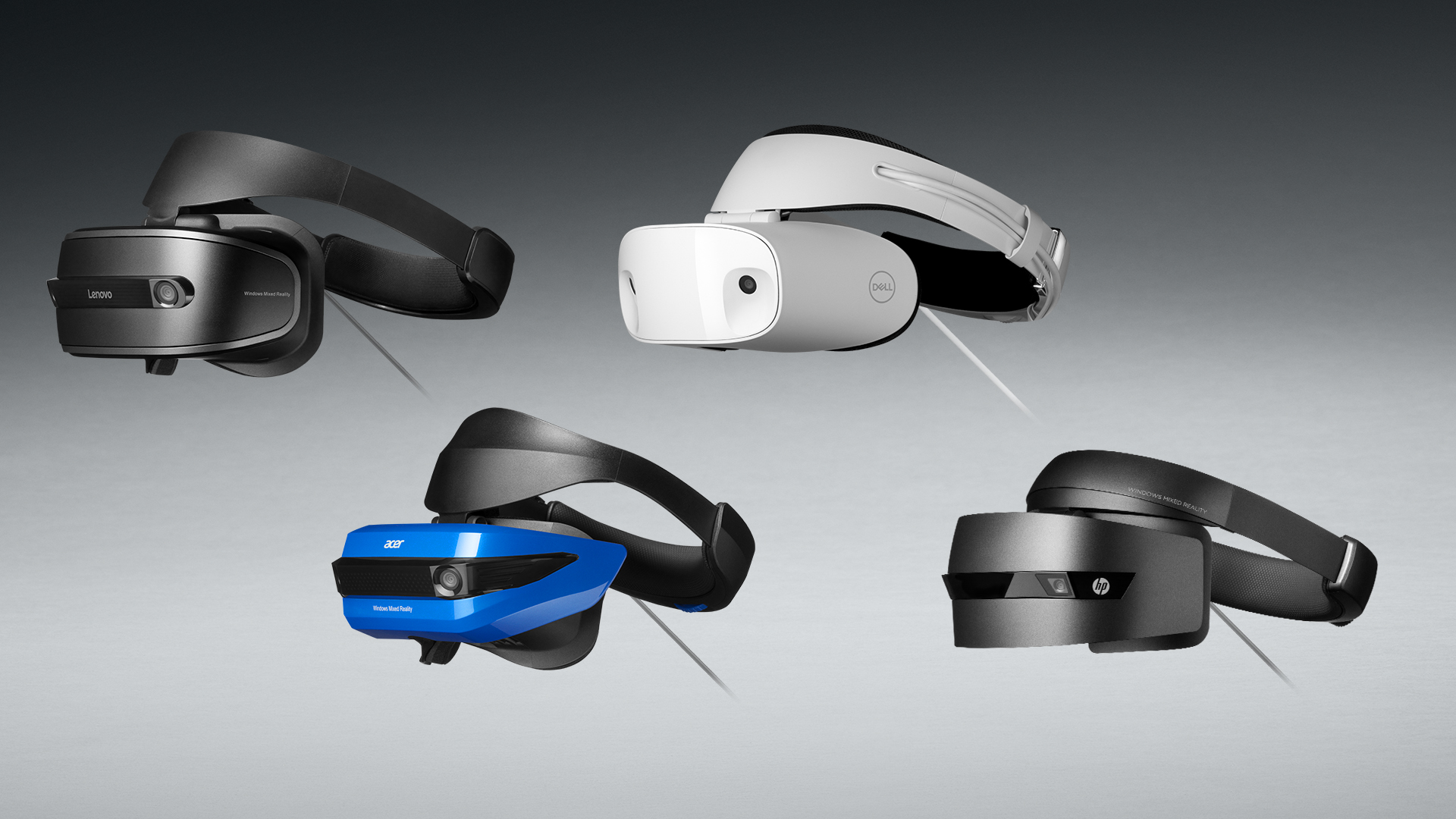
Virtual reality had its big coming out party in 2016, but the technology has only been embraced by early adopters so far. That’s largely because the best virtual reality headsets available are still considerably more expensive and require some time and effort to set up. Microsoft is one of several tech companies hoping to address those issues, and the culmination of its efforts will debut later this year.
Microsoft announced late last year that it would work with its PC hardware partners to develop headsets that support virtual and augmented reality. These headsets run a new version of Microsoft’s software called Windows Mixed Reality, a version of Windows devoted to augmented and virtual reality experiences.
Microsoft is hoping to make virtual reality more accessible to consumers by ensuring that these headsets are compatible with cheaper computers. While the Oculus Rift and HTC Vive must be tethered to high-end PCs to work, Windows Mixed Reality headsets will be able to run on laptops that don’t include dedicated graphics card, while the goggles themselves will start at $299. And because these devices are running on the same software platform, multiplayer games will work across different types of Windows headsets. The first of these devices, which include VR viewers made by HP and Acer, will launch in time for the holiday season.
I had the chance to try on a Windows Mixed Reality headset designed by popular PC-maker Acer, along with the new VR motion controllers (announced in May). During my demo, I sampled a few Windows MR apps that included alien and zombie-themed shooter games, a virtual paintball match and a gorgeous 3D puzzler. What immediately struck me was how different the launch screen feels compared to headsets made by Facebook and HTC. Instead of scrolling through a menu to select things, the Windows Mixed Reality launcher requires the user to virtually explore a luxurious virtual home in order to discover and launch apps. These apps are scattered throughout the environment: one appeared in the living room, for example, while another was situated on the roof. It’s Microsoft’s attempt to create a virtual reality interface analogous to a computer’s desktop.
I tilted the motion controller’s joystick to move about the space, which teleported me in the direction I was currently facing — a common tactic for navigating around a virtual environment in VR. Overall, the new motion controllers felt responsive and were comfortable to hold, though button placement may need work: I kept getting kicked out of apps because I was accidentally hitting the Windows button.
Although these headsets will work with computers containing either integrated or dedicated graphics, the experience will differ depending on the type of laptop you own. I tried both types of systems during my demo, and the laptop with dedicated graphics was unsurprisingly able to run more visually complex games. Computers with integrated graphics will still be able to run games like Minecraft and immersive 360 travel tour apps, but they likely stumble when tackling more resource-hungry ones.
These Windows Mixed Reality headsets feel like a middle ground between smartphone-based virtual reality (Samsung’s Gear VR) and premium headsets (Oculus Rift, HTC Vive). But there’s a crucial element that differentiates them from either tier: Windows Mixed Reality headsets include extra sensors built into the headset, making it possible to track your position in virtual space without external hardware. It’s this technology that makes it possible to walk around the virtual environment and pick up a digital paintball gun, or run up to your opponent’s flag and grab it to win the match. And it’s what makes really convincing virtual reality feel so immersive.
This is perhaps the key differentiator between a high-end headset like the Oculus Rift and Samsung’s budget-priced Gear VR. The Gear VR has lack tethers or the need for external sensors, but it’s a barebones headset powered by a smartphone. The Rift and HTC Vive offer far greater immersion, but require sensors placed around the room, which can be tedious to take down and set back up if you lack a dedicated space. The technique Microsoft and its partners are using is known as inside-out tracking, and Facebook, Google, and Intel are all working on virtual reality products using similar technology.
What will truly determine whether these Windows-powered VR headsets are successful is the quality and variety of apps they’re compatible with, of course. Windows Mixed Reality will support apps and experiences from Sony, Jaunt and Hulu in addition to games like Rec Room (a VR social club that supports multiplayer paintball and other sports games) and Dreadhalls (a horror-themed dungeon crawler). Microsoft is also bringing popular games it owns to Windows Mixed Reality, including Halo and Minecraft, and its headsets will also be compatible with games from Valve’s digital Steam store.
What I saw of Windows Mixed Reality looked promising, offering some interesting solutions to obvious problems that plague virtual reality today. Whether it’s the right technology at the right time is harder to say. As companies like HTC and Oculus lower the prices of their headsets and eventually get around to rolling out their own headsets with inside-out tracking, the stakes are only going up.
More Must-Reads from TIME
- Donald Trump Is TIME's 2024 Person of the Year
- Why We Chose Trump as Person of the Year
- Is Intermittent Fasting Good or Bad for You?
- The 100 Must-Read Books of 2024
- The 20 Best Christmas TV Episodes
- Column: If Optimism Feels Ridiculous Now, Try Hope
- The Future of Climate Action Is Trade Policy
- Merle Bombardieri Is Helping People Make the Baby Decision
Contact us at letters@time.com